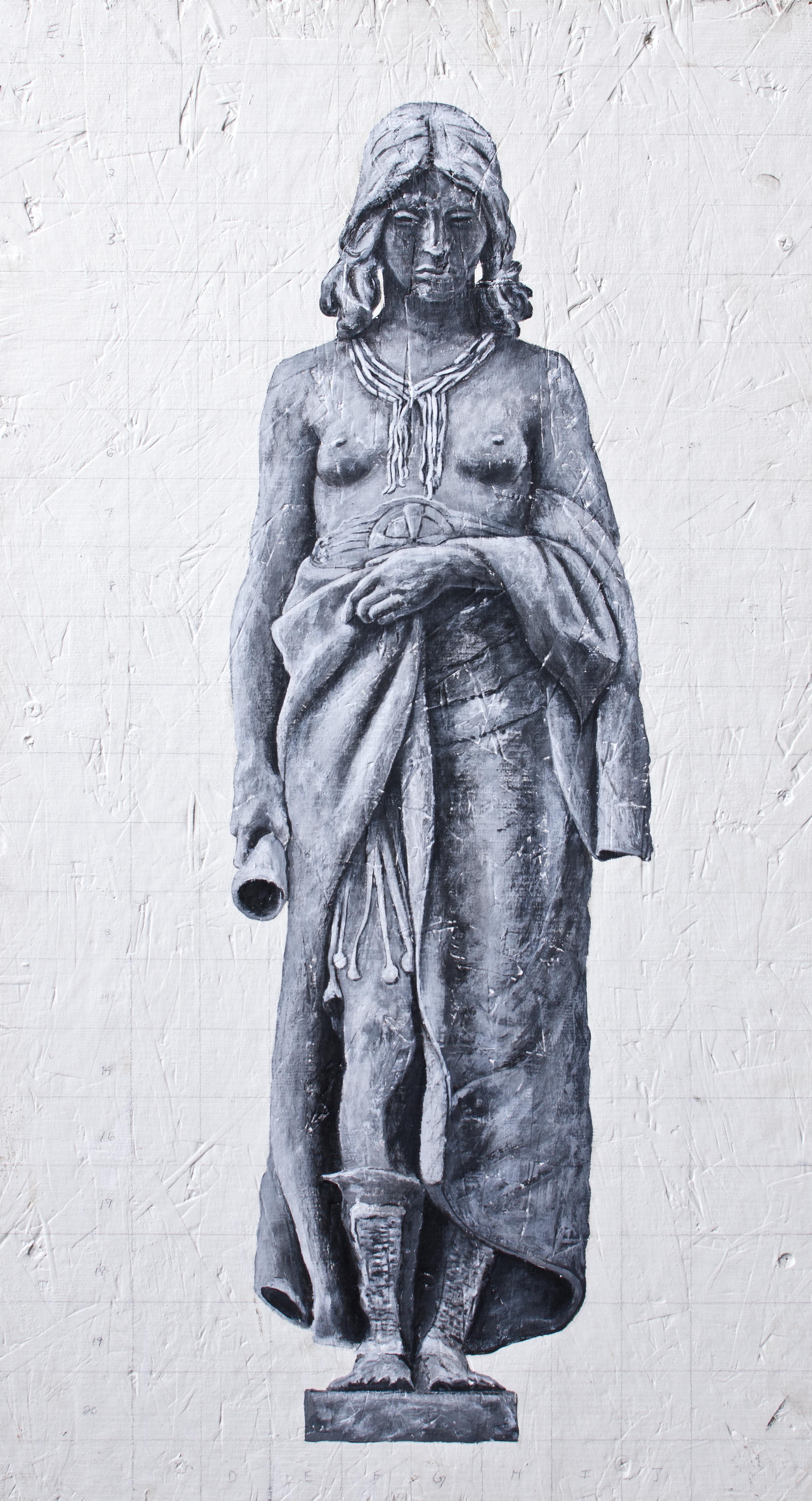Corning Fountain Statues
In 1991 The Corning Fountain located in Bushnell Park Hartford CT., changed my life's path to such a degree that, in 1997, when I moved to Hartford, I knew I wanted to pay homage to the statues that comprise this fountain.
Located in the archives of the Watkinson Library at Trinity College are the letters and hand written notes of J. Massey Rhind, the artist who constructed this public landmark in 1899. To see the ledger and correspondences between the artist, patrons, and contractors was fascinating but, I had expectations to uncover sketches or drawings of the artist's process. But, while making this series I had soon discovered that I was creating something close to the sketches that I had wished to see from long ago. Each panel has grid lines in pencil and is painted in acrylic paint on chipboard using a simple grayscale format.
Below is more on the history of the fountain itself.
Maiden - Facing East 18/36"
Maiden - Facing West 18/36"
Maiden - Facing North 18/36"
Maiden - Facing South 18/36"
Chief/Sachem - Facing North 26/42"
Scout - Facing south 26/42"
Hunter - Facing West 26/42"
Warrior - Facing East 26/42"
Stag/Hart - Symbol of hartford 18/26"
Corning Fountain Brief History
Corning Fountain - Bushnell Park Hartford,CT. 1997
John Benton Corning, born 1811, spent the 85 years of his life in the Corning homestead on Pearl Street. Starting out as clerk in a dry goods store, Mr. Corning eventually opened his own business at 375 Main Street. The merchant’s business expanded and he became interested in banking and real estate, acquiring realty holdings on Asylum, Trumbull, Pearl, and Main Streets. When he died in 1896 his son, Jon J. Corning, already a successful broker in New York, wished to honor his father and the city of Hartford by creating a memorial in his father's name.
Scottish born J. Massey Rhind was chosen by Jon J. to create this public work. Rhind came to New York City in his twenties and became one of the most distinguished romantic sculptors of his time. His most notable works include the Alexander Hall at Princeton University, a set of bronze doors at Trinity Church in New York City, and statues of William McKinley, George Washington, Theodore Roosevelt, and William Howard Taft.
For the Corning Fountain project Rhind sought ideas from Hartford’s past and decided Native Americans would dominate this commission. In older documents it is said Rhind chose as his models woman from the Oneida tribe out of New York, but more recent writings suggest Saukiog are the origins of the faces and figures studied. Saukiog translates to “black earth” or “at the dark ground” and refers to the silt that gathers along the banks of the Connecticut River where the Saukiog once made their homes.










